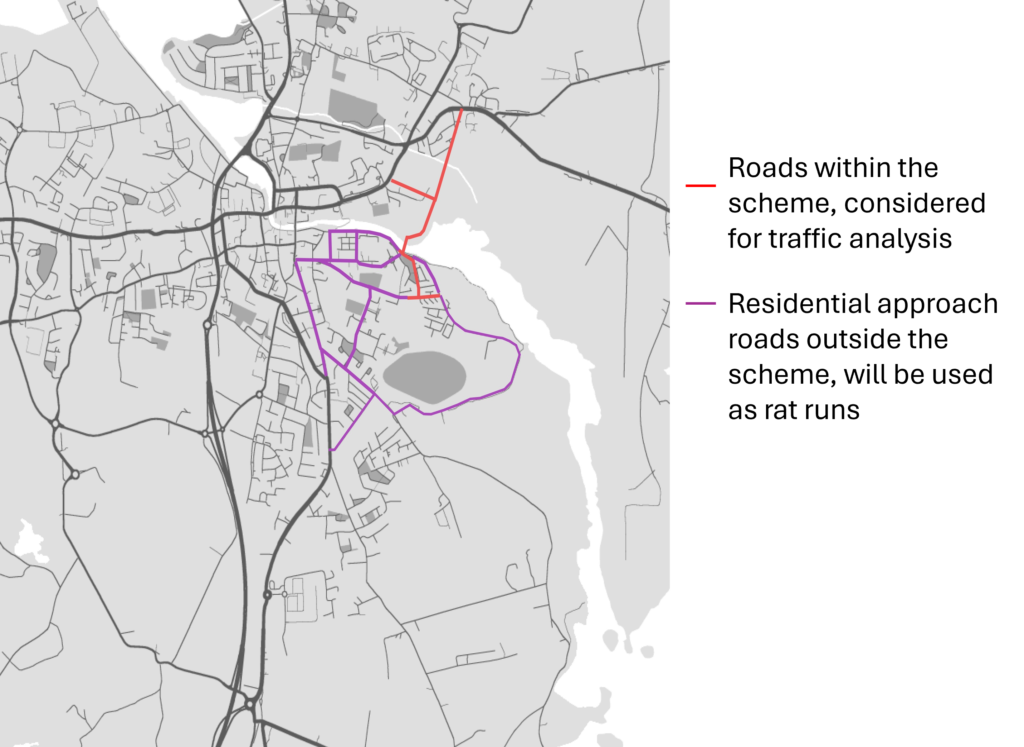MYTHS
THE BRIDGE NEEDS TO BE THIS BIG (FALSE)
When given options for the bridge design in 2007, Sligo County Council chose a 34m high design, despite a more appropriate 3m high bridge offered as an another option by the same designers.


The giant arch offers nothing apart from a waste of money and materials, a threat to wildlife and a way to block views.
THIS IS A LOCAL BRIDGE (FALSE)
Sligo County Council have said in chamber meetings that this is needed for “opening up our county” and “essential for the Northwest region”.
In 2007, the designers estimated 20,000 vehicles would daily pass over the bridge. No ban on Heavy Goods Vehicles is in place for the bridge.
Calling the bridge a local road is a way to avoid dealing with the reality that all roads leading up to the scheme from the South are quiet residential streets that cannot handle the traffic increase that will be caused by the scheme.

THIS IS A REGIONAL BRIDGE (FALSE)
Despite the enormous cost, it is also claimed that this is a local bridge that will only be used by local residents.
This statement is only a way to avoid addressing the traffic problems that will be created by thousands of additional cars being fed through bottlenecks like Cemetery Road.
THE BRIDGE IS ENVIRONMENTALLY FRIENDLY (FALSE)
Sligo County Council writes that they are writing a sustainability plan that “aims to minimise the carbon footprint”. Making the bridge orders of magnitude bigger than it needs to be makes it impossible for this scheme to be anything but a disaster for the environment.
Construction of the unnecessary arch alone is the carbon equivalent of 1000 transatlantic flights. The cables on that unnecessary arch will kill swans and other protected species in this Special Area of Conservation.
It has been noted in the project documents that the construction of the bridge will disrupt the ecology of the Garavogue and Lough Gill. There will be an increase in NOx concentrations of greater than 2µg/m3 within this area which hosts several rate plant species. This will lead to a reduction in plant growth, harming the entire ecosystem.
IT GOT PLANNING PERMISSION, SO MUST BE GOOD (FALSE)
The scheme fell under the 1993 Roads Act, which gives unlimited planning permission to projects. Despite this permission being granted before many residents were even born, it still stands.
A sceptic on climate change was appointed to undertake Strategic Environmental Assessment for Sligo’s Development plan at the time.
IT IS TOO LATE TO CHANGE ANYTHING (FALSE)
As of yet, no contracts have been signed for construction, or tender documents issued. The scheme is nothing more than plans on a desk. Politicians say that nothing can be changed because they don’t have the will. In reality, infrastructure projects are modified, improved, or scrapped all the time.
When everyone can see that this scheme is a relic of a Celtic Tiger idea, a scheme more fitting to Dubai than Doorly Park, the intelligent next step is to modify it. Blindly following out-of-date ideas helps nobody.